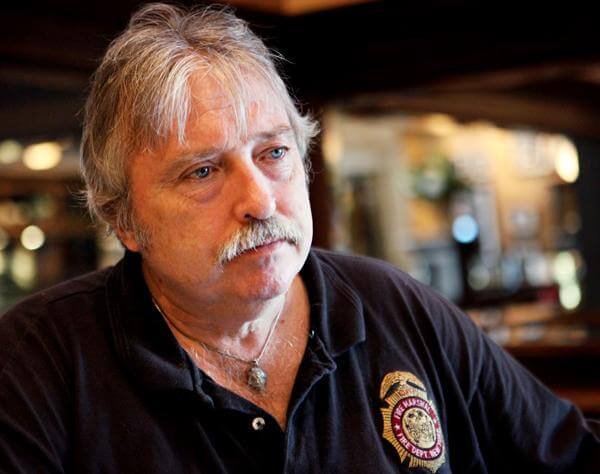By Connor Adams Sheets
On the morning of Sept. 11, 2001, Whitestone FDNY veteran Eugene Kelty was off duty, playing golf with his brother James and two Fire Department friends at an annual fund-raiser at the Douglaston Park Golf Course.
“We were on the second hole when my brother’s pager went off and it said ‘plane hit World Trade Center,’ he said. “He called the Fire Operations Center and they said it was a jet that hit Tower One. We were on the golf cart and we could see the World Trade Center and the smoke coming out.”
Kelty, who was captain of Engine 10 in downtown Manhattan at the time, and his three comrades piled into their vehicles and speeded straight to Manhattan, zooming through the Queens Midtown Tunnel, which had been cleared of civilian traffic.
Engine 10 is located in the famed Tenhouse, the closest firehouse to the World Trade Center, at 124 Liberty St., and Kelty said he and his brother made it there after the second tower was hit but before either one came down.
They were in a windowless room on the house’s second floor changing out of their golf duds when they heard an ominous sound and went downstairs.
“We heard the rumbling and thought it was another plane hitting the building, but it was Tower Two coming down,” Kelty said. “It reminded me of what they said about Mt. St. Helena’s with all the ash blowing everywhere. We didn’t know what happened. With the magnitude of the building, we didn’t know what to expect.”
Tenhouse was quickly transformed into a makeshift base for many first responders since it was the only firehouse in the area with a generator and running water. Kelty and his crew worked long shifts at Ground Zero until early November, when they took their first leave from the grueling labor.
The Tenhouse lost six men that day — five active and one retired — and the survivors spent backbreaking days sifting through rubble, marking with GPS units the locations of body parts and evidence found at the site, and coming together in a camaraderie shaped by tragedy.
The pain of that day’s destruction and its aftermath caused irrevocable harm to many who were there to experience it — from injuries and emphysema to night terrors and divorce. And those wounds are still fresh for Kelty.
“It was so hopeless that day. It was to the point that I said ‘do I want retribution? Yes.’ But the crazy people just keep doing these things,” he said. “I just want the crazy people to stop.”
But despite that bleakness, there are lessons to be gleaned, he said.
First off, Kelty, who has been in the FDNY for 32 years and now serves as battalion chief of Battalion 10 in Upper Manhattan, says the department has a different view of how to fight fires and disasters, and how to protect its men.
“I’m more aware of putting people in buildings if something happens next time. The story now is maybe we won’t stand as close to the building. Maybe we won’t send as many people in next time,” he said. “In an ion storm, Capt. Kirk couldn’t reach the Enterprise, even with all his technology. It’s an ion storm … We should never lose 343 people again. Shame on us if it happens again.”
And in the end, though Lower Manhattan still is not back to normal and politics still surround everything involving 9/11, Kelty said there is joy inside the tears.
“It brought a lot of spirit and religion back to people, because the magnitude of the event brought people around to the fact that life was so precious and can be lost in an instant,” Kelty said. “It brought a lot of people back to how special life was and how religion can play a part, whatever your religion.”
Reach reporter Connor Adams Sheets by e-mail at csheets@cnglocal.com or by phone at 718-260-4538.































